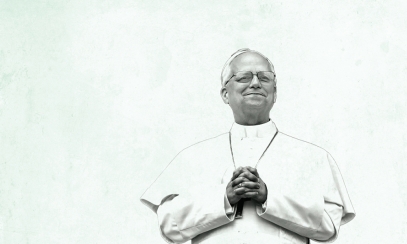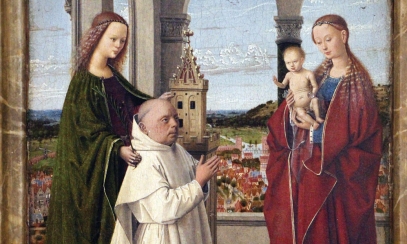
Do Catholics worship Mary?
St. Teresa of Jesus teaches that prayer is “an intimate sharing between friends,” (Life, c8, 5), principally expressed in worship through offering a sacrifice of praise. Since the Church is one communion of friendship across heaven and earth, Mary, as our heavenly friend, is a Christian’s companion on earth and rightly venerated — especially through “entrustment” (Jn 19:27) — but never worshipped, for adoration is reserved to God alone. Some theologians articulate this distinction thus: latria (worship) belongs to God alone, while dulia (honor) pertains to creatures. Since Mary is the greatest disciple among created rational creatures, she receives hyperdulia (super honor), not latria. (Summa Theologica 111.25.2; 111.25.5) The Church venerates Mary, the Mother of Jesus (Lk 1:28, 41-55), revealing in her the victory of the paschal mystery, and proposes Mary, the “Mother of God and of men,” as the foremost model of discipleship guiding the faithful to the Father through her Son, Jesus. (Lumen Gentium 63-65; 68; Sacrosanctum Concilium, 103-104) Thus, to celebrate her feasts is to “proclaim the wonderful works” of Jesus Christ in her and set her before the faithful as an “example for their imitation.” (SC 111)
For this reason, the Code of Canon Law states, “To foster the sanctification of the people of God, the Church commends to the special and filial reverence [venerationi] of the Christian faithful the Blessed Mary ever Virgin, Mother of God, whom Christ established as the mother of all people, and promotes the true and authentic veneration of the other saints whose example instructs the Christian faithful and whose intercession sustains them” (c. 1186). Differing essentially from the cult of adoration — which belongs to the Trinity — the Solemnity of Holy Mary the Mother God, her Immaculate Conception, and her Assumption are among the holy days honoring Mary. (c. 1246 §1; cf. LG 66)
Moreover, seminarians are to foster veneration (cultus) of Mary via the rosary, mental prayer, and other acts of piety (c. 246, §3), clergy are to honor Mary with special veneration (veneratione), and religious with special veneration (cultu), especially with the rosary. All Christians are encouraged to venerate Mary. While the Church permits veneration of sacred images of Mary and the saints, a historically grounded practice, it must be with “suitable order,” removing or correcting any abuses, excesses, or defects, so as to not give rise to “inappropriate devotion.” (c. 1188; cf. c. LG 51) Obviously, inappropriate devotion would be worshiping Mary or any images of her. Nevertheless, theology and art come together and are found in the veneration of sacred images of the Blessed Virgin Mary. One must understand that true devotion to Mary can only flow from personal faith in Jesus Christ, and so pious devotions to Mary are encouraged as long as they are Christo-centric, in harmony with Scripture and tradition, and foster a personal relationship with each person of the Trinity. (CDWDS, Directory on popular piety and the liturgy, 183-247)
Liturgical feasts, Saturday devotions, novenas, Marian Months, Marian Scripture meditations, the Angelus, Regina Coeli, the rosary, litanies of Mary, acts of consecration, scapulars, medals, sacred images of Mary, etc., are all to be promoted as aids to becoming the disciples of Jesus that God intends us to become. In short, Catholics do not worship Mary, but enjoy friendship with her, which is often expressed through acts of veneration.



